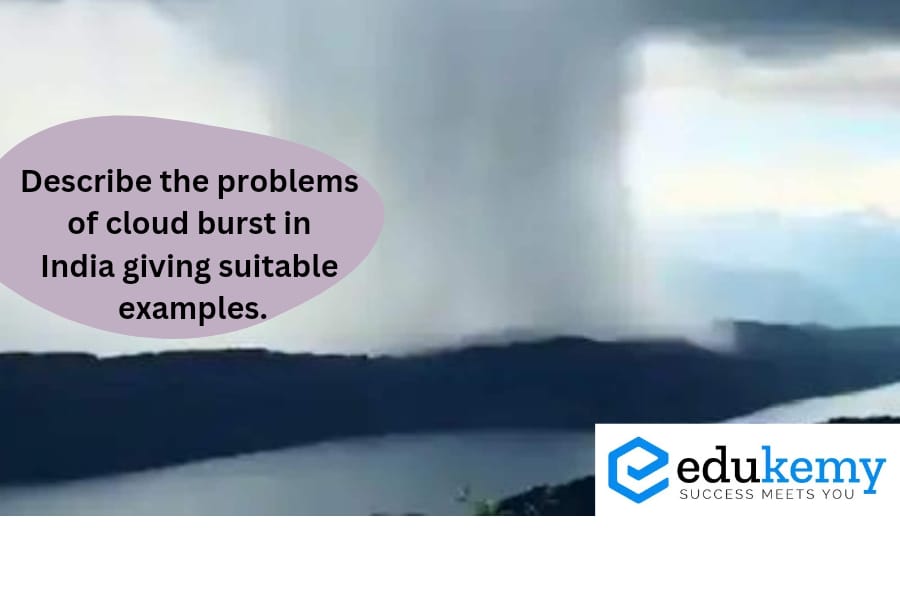
A cloud burst refers to an intense and sudden downpour of rainfall over a localized area, often occurring within a short duration of time. These events are characterized by a rapid discharge of water vapor from cumulonimbus clouds, leading to heavy precipitation. In India, cloud bursts primarily affect hilly regions, posing significant challenges and risks to communities residing in these areas.
Contents
Problems of Cloud Bursts in India:
Flash Flooding: Cloud bursts can trigger flash floods, overwhelming rivers and streams.
● The 2013 Uttarakhand flash floods, exacerbated by cloud bursts, resulted in extensive damage and loss of life.
Landslides: Heavy rainfall from cloud bursts increases the risk of landslides, particularly in mountainous regions.
● The 2018 landslide in Malin, Maharashtra, caused by a cloud burst, claimed numerous lives and destroyed homes.
Infrastructure Damage: Cloud bursts often damage infrastructure such as roads and bridges, disrupting transportation and communication networks.
● In 2020, Himachal Pradesh faced infrastructure damage due to cloud bursts, hindering rescue efforts.
Loss of Lives and Livelihoods: The sudden nature of cloud bursts can catch people off guard, resulting in loss of lives and livelihoods.
● The 2021 cloudburst in Chamoli district, Uttarakhand, led to casualties and impacted local communities’ livelihoods.
Environmental Degradation: Cloud bursts contribute to soil erosion and environmental degradation.
● The 2013 Uttarakhand cloud burst caused significant environmental damage, including soil erosion and loss of vegetation cover.
Solutions:
● Early Warning Systems: Implementing advanced early warning systems can help communities prepare for impending cloud bursts and take timely evacuation measures.
● Infrastructure Resilience: Strengthening infrastructure, such as constructing resilient roads and bridges, can minimize damage caused by cloud bursts.
● Reforestation and Soil Conservation: Promoting reforestation and implementing soil conservation measures can mitigate soil erosion and reduce the impact of cloud bursts.
● Community Preparedness: Educating communities about the risks of cloud bursts and training them in disaster preparedness and response can save lives and minimize damage.
● Sustainable Development Practices: Encouraging sustainable land use practices in vulnerable areas can reduce the risk of cloud burst-related disasters.
Conclusion:
Looking ahead, proactive measures are essential to mitigate the adverse effects of cloud bursts in India. Collaboration between government agencies, communities, and stakeholders is crucial in achieving sustainable solutions to address this natural phenomenon and safeguard lives and livelihoods in India’s vulnerable regions
In case you still have your doubts, contact us on 9811333901.
For UPSC Prelims Resources, Click here
For Daily Updates and Study Material:
Join our Telegram Channel – Edukemy for IAS
- 1. Learn through Videos – here
- 2. Be Exam Ready by Practicing Daily MCQs – here
- 3. Daily Newsletter – Get all your Current Affairs Covered – here
- 4. Mains Answer Writing Practice – here

